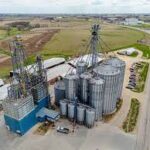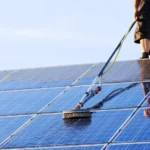Monolithic, Castable, Unshaped Refractory of REFRA Malaysia
Monolithic Refractory (Castable, Gunning) Quick Installation, Strong Adaptability, Easy Maintenance

Monolithic refractory (castable and gunning) are the name generally given to all unshaped refractory products produced by Refratechnik Asia for Malaysia and South East Asia market. They are coming from special mixes or blends of dry granular materials and used to form joint-free lining. Therefore, they are usually installed as some form of suspension that ultimately harden to form a solid mass.
Monolithic refractories contain a wide range of mineral compositions and vary greatly in their physical and chemical properties. The selection of proper monolithic is based on a number of factors throughout the whole cement production line, including temperature; the existence of build-ups; alkali attack, abrasion and application area. Thus, we offer various classes of monolithic which are focused in different purposes and applications.
Let’s find your right monolithic

Classification of monolithic refractory by Refratechnik
Low Cement (Hydraulic Bonded) Castable
Conventional castable that is mixed with water to start bonding, based on various raw materials from low to high alumina contents, together with different ratios of silicon carbide addition, to offer desired thermal, mechanical and chemical resistances.
No Cement (Chemically Bonded) Castable
Advance castable with special bonding technology that requires to be mixed with special chemical liquid binder instead of water and offers high energy and time savings with its accelerated setting and recommended heating-up times, extreme mechanical and abrasion resistance as well as very high chemical resistance due to the addition of different ratios of silicon carbide and/or zirconia. Perfect solutions for cement plant’s pain points (burner tip, nose-ring, bull-nose, tertiary air duct TAD damper, etc.).
Dry Dense Gunning
Advanced gunning refractories in a versatile product range offering solutions with large coverage in static aggregates, with faster installation time, very high chemical resistance and a thermomechanical resistance similar to castable refractories.
Veneering
New refractory repair solution, that allows gunning on existing worn lining without anchor up to 100 mm on straight walls in static aggregates and rotary kiln based on special bonding and installation equipment technology, and offers lower downtime and higher energy savings, together with sufficient lifetime.

Hybrid castable refractory technology
The optimized sol-gel technology, that permits the combination of faster heat-up and high strength at low temperatures. It is therefore ideally suited for applications in which high strengths are required in the range of 20 to 1000 °C; where the mechanical impact due to movement might be the case; for example, nose-ring, burner tip and in the production of prefabricated components for bull-nose, tertiary air duct TAD damper and other areas.
Hybrid castable make all the difference, compared with conventional cement containing castable:
- Faster heating up with shorter downtime
- Cost and energy-saving
- Very good adherence to existing refractory materials
- Installation possible on hot surfaces and with high ambient temperatures
- Higher application temperature limits
- Optimized thermomechanical behavior
- Long storage life of 12 months
- Increased cold crushing strength and modulus of rupture as well as optimized abrasion resistance in the temperature range below 1000 °C

Pain points: Burner tip refractory installation

Even though only a small refractory material volume, one of pain points of cement plants unit for smooth cement production.
Burner tips are always exposed to alkalis, corrosion and abrasion by clinker. They also experience vibration and exposure to high temperature.
Our solutions concerning the choice of material, dimensioning, anchoring and installation technique guarantee long lasting operation time.
Pain points: Nose-ring refractory installation

Another pain point of cement plants and very critical unit for smooth cement product production, as being the area where clinker falls out and exposes to mechanical and chemical stresses and thermal load.
We have deep understanding for nose-ring requirements with long experience and many references, offering special refractory solutions for long lasting lifetime including anchoring and supervision service.
Veneering refractory installation technology
A new refractory repair method that is applied on worn linings in both static aggregates and rotary kiln, to offer less downtime, energy and cost saving and sufficient lifetime with special installation equipment and experienced & skilled installation team.


What
- Dry dense gunning products
- Refractory repair on worn working linings to reach original working lining thickness again
- App. thickness
- Maximum 100 mm on vertical lining
- 70 mm on horizontal lining
- Minimum 25 mm (It is more than make-up!)
Why
- Fast commissioning
- Energy saving (Short heating-up)
- Cost saving (Low refractory consumption, repeatable…)
Where
- Static aggregates and rotary kiln (only in emergency)
- Best performance in low abrasion zones
- On working lining only
When
- In planned kiln shutdown
- Emergency situations (to run kiln until next planned KSD)
How
- Assessment on existing lining
- No need of demolition, new insulating lining and anchors
- With standard dry dense gunning equipment set-up





